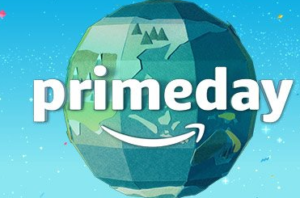 Well, today is Prime Day once again, July 11th being a day now when people buy buy buy, much like Cyber-Monday, Black Friday, and a few other serious shopping days.
Well, today is Prime Day once again, July 11th being a day now when people buy buy buy, much like Cyber-Monday, Black Friday, and a few other serious shopping days.
I’ve been an amazon fan since they first came into existence. I enjoy shopping there, and have gotten more than a few peaks behind the curtain helping people develop Amazon feeds, back in the day, or more recently, helping people debug their Amazon to Shopify stores on their own domain.
There has been a huge shift in what people are being told by the gurus to do to sell physical products direct-to-consumer (basically the B2C model has completely changed). Because Amazon transformed the marketplace from a free-for-all with thousands of domains fighting for placement, and people using Google search to shop for things, to the new model where product shopping is first-and-only done on Amazon by most searchers.
Sure, they do their product research elsewhere, but when it’s time to buy, they’re visiting Amazon directly and shopping there. Mostly. Not always, and not everywhere. But, boy oh boy, that’s a bigger and bigger truth these days, over more and more of the globe.
So, the gurus stopped fighting this. It started a handful of years ago with one group, the Amazing Selling Machine folks, powering out their message. And because their system works if you use it, a lot of other gurus followed suit recommending that physical products be sold on amazon, some offering their own additional twist on the idea. No longer will you find as many of the gurus recommending that you get your self-hosted online store up and get it SEO’d, and build your business up from the ground up, etc. These days, most gurus are trying to sell their own all-in-one pipeline service, or selling you the “secrets” to how to succeed on Amazon. The only course I can recommend from the bunch that discuss Amazon is the ASM one above. It’s pricey but worth it. And now there are a number of gurus talking about how to build successful pipelines on their websites, often leading straight to an Amazon business. (Sometimes I check into these services and find that the technique is to steal someone else’s pipeline and then simply direct traffic to an amazon product. But when I pay for access to these trainings, I’m more and more often finding that Amazon is the eventual recommendation for how to sell physical products.) I’m seeing a real pattern here. Amazon is considered the place to sell physical products. And that’s true. For now.
Note: Sometimes, when a client is using Amazon, they put a long form sales letters on their own domain or into emails, that then directs visitors straight over to an amazon page. Or, they have a shopify site listing all their Amazon products, which is much more rare.
I’ve heard tons of buzz about using amazon seller central to warehouse all products, list all products only there, and basically allow them to manage your business for you, often without any back-up plan of having a separate website to sell those products on independently. Obviously, we all know that the rules on Amazon for selling elsewhere are VERY strict and tricky.
I have seen most Facebook marketing gurus switch the discussion from “how to drive traffic to your website” to “how to drive traffic to your amazon page”. I’ve seen dozens of new software tools emerge and boom that are entirely and only for helping to manage an amazon seller central business.
This shows that a LOT of people out there are building amazon businesses, and I’m not recommending against it. I am, however, asking that you consider the long-term. Have a few “what if” fail-safes in place to protect your business. The one you, as a merchant, are building up Amazon with right now. As someone who sees all opportunities online through the SEO prism, I cannot help but see a lot of link-juice, a lot of energy going to promote a website you don’t control.
If you spend thousands of dollars and countless hours building up social media and natural links, those should be going to somewhere that YOU control. That does not include your Amazon page. As most of you know, that can disappear overnight without real explanation or much resort. If you somehow violate Amazon’s rules, which change regularly, your account can disappear overnight. Without an expert to help you, it can be hard or impossible to get that Amazon account back up and running. It’s like if someone simply demolished your storefront one day and you had no way to put it back.
So, do this the smart way. If you want Amazon to do all your inventory management for you, and use them as your sole shop, put up your own store (shopify or similar Amazon-backed front-end that you control) on your own domain and direct at least some of your energy to building up social energy towards that domain of your own. That way, all that energy (in terms of link juice) remains yours if you switch from Amazon to some other physical products management system in the future and you won’t lose the momentum you’ve built.
My two cents for all you AMAZING amazon marketers out there. You’ll want to be flexible if some other site eventually eclipses Amazon. You’re all riding the high right now, but my advice is to plan for possible ebbs in the future.